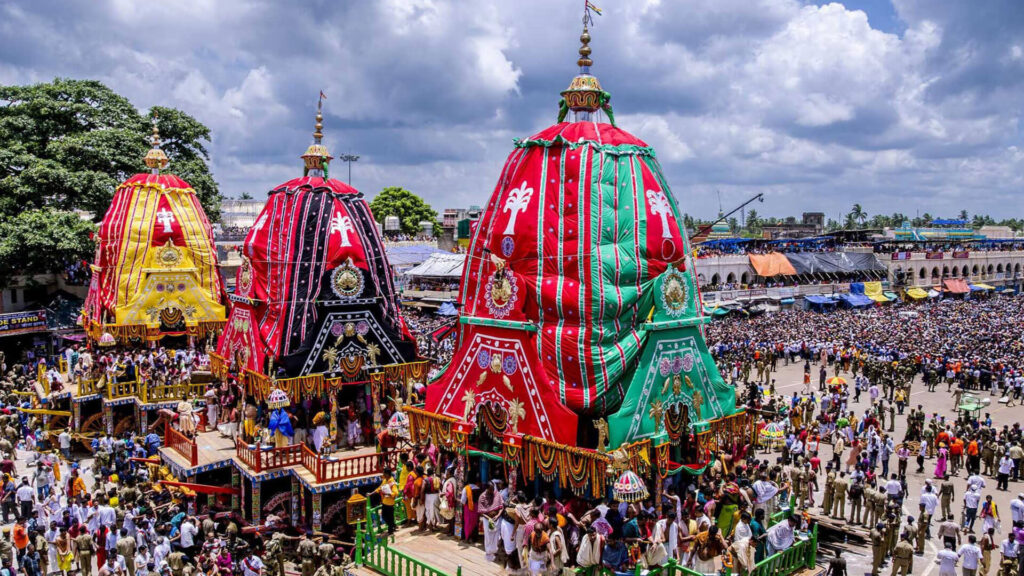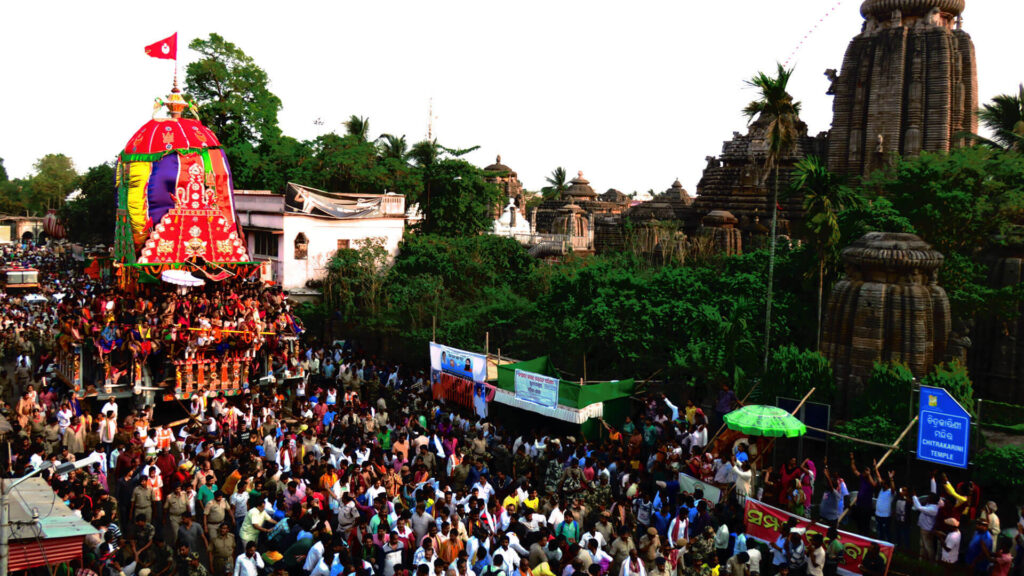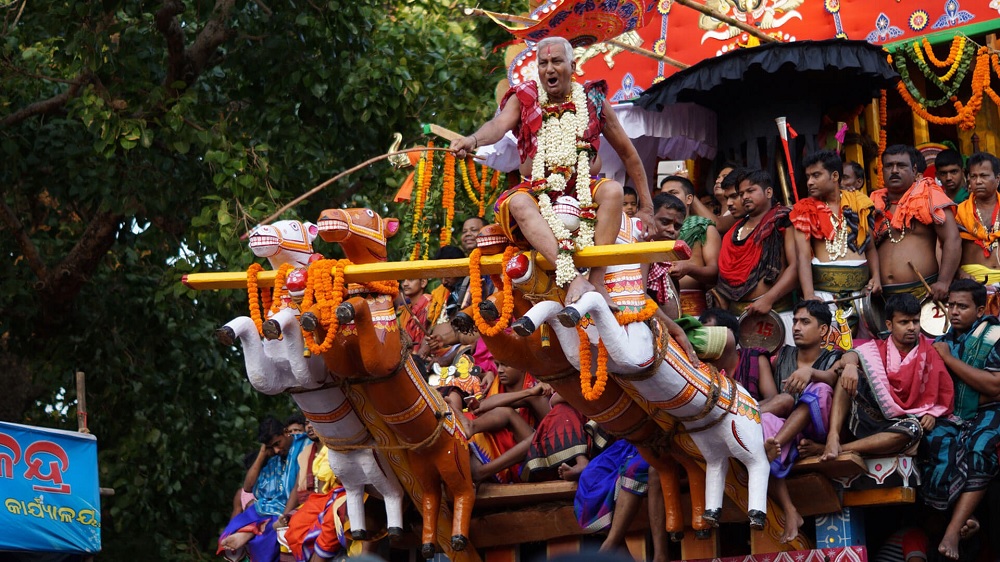Introduction
Ashokashtami festival is a significant festival celebrated with reverence and devotion in the state of Odisha, India. It is observed on the eighth day Ashtami of the Hindu month of Chaitra March-April . The festival holds immense cultural and religious significance, as it commemorates the victory of Goddess Shakti over the demon Mahishasura.
Ashokashtami derives its name from the Ashoka tree, which plays a central role in the celebrations. The Ashoka tree is considered sacred in Hindu mythology and symbolizes prosperity, fertility, and good fortune. On this auspicious day, devotees offer prayers to the Ashoka tree and seek blessings for happiness and prosperity.
The Ashokashtami festival is primarily associated with the worship of Goddess Durga in her various manifestations. Devotees visit temples dedicated to the Goddess, adorned with fresh flowers and vibrant decorations, to offer their prayers and seek divine blessings. The atmosphere is filled with devotion, chants, and the fragrance of incense.

Rituals and Celebrations
A special highlight of Ashokashtami is the ritualistic bathing of the idols of Goddess Durga and Lord Shiva. This ceremonial bath, known as “Snana Yatra,” takes place amidst grand processions and is followed by elaborate rituals and offerings. Devotees believe that participating in or witnessing the Snana Yatra will cleanse them of sins and bring divine blessings.
Ashokashtami is also marked by processions of beautifully decorated chariots carrying the idols of Goddess Durga throughout the streets. Devotees gather in large numbers, singing devotional songs, and chanting hymns, while offering their heartfelt prayers to the Goddess. The procession creates an atmosphere of spiritual fervor and community bonding.
Another unique aspect of the festival is the traditional dance form known as “Danda Nata” or “Staff Dance.” Danda Nata performers, dressed in vibrant attire, carry long staffs and perform intricate dance movements while accompanied by rhythmic beats and melodious music. The dance is a tribute to the victory of Goddess Shakti over evil forces and showcases the rich cultural heritage of Odisha.
Ashokashtami is also a time when people engage in acts of charity and compassion. Donations are made to the needy, and food is distributed among the less privileged. This practice reflects the spirit of service and the importance of giving back to society.
You can read our another post on Raja Utsav in Odisha Festival

Significant Of Ashokashtami
The festival is further embellished by various cultural activities, including traditional music performances, folk dances, and theater shows. Artists showcase their talents through vibrant expressions of art, portraying mythological stories and legends associated with Goddess Durga.
Food plays a significant role in Ashokashtami celebrations. Devotees prepare special dishes and offer them as Prasad (consecrated food) to the Goddess. Popular delicacies include chhena poda (a sweet made from cottage cheese), manda pitha (rice cakes), and various seasonal fruits.
Ashokashtami serves as a reminder of the power of devotion, righteousness, and the victory of good over evil. It creates an atmosphere of spiritual awakening, unity, and harmony as people come together to celebrate the divine presence of Goddess Durga. The festival rejuvenates the senses, strengthens faith, and instills a sense of gratitude for the blessings received.

Write A FAQ For Ashokashtami Puja
What is Ashokashtami Puja?
Ashokashtami Puja is a Hindu festival that is celebrated to worship Lord Shiva and Goddess Parvati. It is observed on the eighth day of the Hindu month of Chaitra.
When is Ashokashtami Puja celebrated?
Ashokashtami Puja is typically celebrated in the month of March or April, depending on the Hindu lunar calendar. The exact date varies each year.
What is the significance of Ashokashtami Puja?
This puja is believed to ward off evil forces and bring peace, prosperity, and happiness to the devotees. It is also considered auspicious for married couples, as it is believed to strengthen marital bonds.
How is Ashokashtami Puja celebrated?
Devotees perform various rituals and offer prayers to Lord Shiva and Goddess Parvati. They visit temples and offer flowers, fruits, and sweets to the deities. Some people also observe fasting on this day.
Can anyone participate in Ashokashtami Puja?
Yes, anyone can participate in Ashokashtami Puja. It is open for people of all ages, genders, and castes. Everyone is welcome to seek the blessings of Lord Shiva and Goddess Parvati.
What is the significance of fasting during Ashokashtami Puja?
Fasting during Ashokashtami Puja is believed to purify the mind, body, and soul. It is a way to show devotion and seek blessings from the deities. It is customary to break the fast after offering prayers and performing rituals.
Are there any specific rituals associated with Ashokashtami Puja?
Yes, there are specific rituals associated with Ashokashtami Puja. These include taking a holy bath early in the morning, visiting temples, offering prayers, performing aarti (a ritual of waving lighted lamps), and reciting hymns and mantras.
Are there any specific customs followed during Ashokashtami Puja?
Some customs followed during Ashokashtami Puja include wearing new clothes, decorating the puja area with flowers and rangoli (colored powder designs), and lighting oil lamps. It is also common to distribute prasad (sacred food) to family and friends.
Can Ashokashtami Puja be performed at home?
Yes, Ashokashtami Puja can be performed at home. Many families set up a small puja altar and perform the rituals themselves. However, some people prefer visiting temples and participating in community gatherings for this occasion.
What are the benefits of observing Ashokashtami Puja?
Observing Ashokashtami Puja is believed to bring prosperity, happiness, and well-being to individuals and their families. It is said to remove obstacles, promote harmony in relationships, and bestow divine blessings upon devotees.
Conclusion
In conclusion, Ashokashtami in Odisha is a revered festival that pays homage to the Ashoka tree and celebrates the victory of Goddess Shakti. It encompasses customs, rituals, Snana Yatra, processions, Danda Nata dance, cultural performances, acts of charity, and traditional cuisine. Ashokashtami fosters devotion, community bonding, and the recognition of the divine power that brings prosperity and protection. It is a time to seek blessings, express gratitude, and rejoice in the triumph of good over evil.
